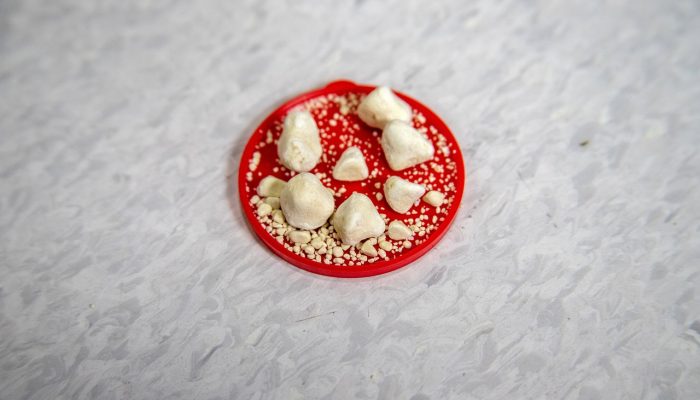Introduction
Back pain is one of the world’s leading causes of disability, affecting an estimated 540 million people globally at any given moment. In the United Kingdom alone, nearly one in four adults report experiencing lower back pain in any given three-month period. These figures are not to be taken lightly: they underscore the importance of providing safe, effective, and holistic approaches to managing this prevalent condition.
Beyond the aches and stiffness, the ripple effect is profound, lost workdays, disturbed sleep, strained relationships, and a dent in overall vitality. While painkillers, physiotherapy, or even surgery may be part of the picture, many people are searching for something gentler, more holistic, and longer lasting. This is where homeopathy steps in, not to suppress pain, but to work with the body’s natural intelligence to restore balance and resilience.
Why Back Pain Persists
To understand where homeopathy fits, it helps to know why back pain becomes such a stubborn guest in so many lives.
- Acute pain is the short-term type (often a pulled muscle or minor injury) that usually clears up in a few weeks.
- Chronic pain, by contrast, lingers for three months or more, sometimes for years. It may stem from disc degeneration, nerve irritation, or ingrained postural habits.
The human cost is staggering. Back pain is the leading cause of disability worldwide, and in the UK alone, more than £5 billion a year is lost in productivity due to pain-related absences. Beyond the statistics, however, lie countless personal stories, people who can no longer garden, play with grandchildren, or sit comfortably through a family meal.

Remedies That Speak the Body’s Language
The right remedy, matched to the individual’s unique picture, can ease pain and restore flexibility. Some examples:
- Rhus toxicodendron: The classic “rusty hinge” remedy. Stiffness that eases with gentle movement, worse after rest, better with warmth. Often useful for those who wake sore but loosen up as they move about.
- Bryonia alba: For people whose pain is aggravated by even the slightest motion, who prefer to lie still and apply firm pressure. Often accompanied by irritability and dryness.
- Hypericum perforatum: Indispensable for nerve pain, sharp, shooting, or radiating down the legs. Especially when the back has been jolted or compressed.
- Arnica montana: The go-to for pain after strain, overexertion, or trauma. The back feels bruised, sore, and tender.
- Calcarea fluorica: For long-term stiffness and weakness in the ligaments or joints, often linked with overuse or structural wear and tear.
- Kali carbonicum: Known for stitching pains in the lower back, often worse at night and better lying on the painful side. A remedy for those who feel “worn down” by responsibility.
What’s fascinating is how each remedy paints a picture of not just pain, but personality. Bryonia patients often want solitude; Rhus-tox patients can’t sit still; Kali-carb types may be stoic yet exhausted. The art lies in listening carefully to both the back and the broader story.
Energetic Resonance and Minimum Dose
Homeopathy’s strength lies in constitutional prescribing, matching a remedy to the individual’s overall temperament, predispositions, and symptom pattern. In recurring or chronic back-pain cases, this strategy helps not only to resolve the presenting episode but also to reduce the likelihood of relapse.
In cases of back pain, a remedy that can mimic or resonate with the totality of the patient’s experience (pain quality, triggers, accompanying symptoms, and energetics) is given in the minimal potentised dose necessary to elicit improvement.
For example, a patient experiencing sharp, stabbing pain that improves with warmth and worsens with exertion might be offered Hypericum perforatum 30C, especially if there is nerve involvement or shooting pain. Another individual with dull, heavy, aching pain, aggravated by cold and relieved by heat, but accompanied by fatigue or heaviness of limbs, may respond well to Rhus toxicodendron 30C or 200C, both remedies commonly indicated for musculoskeletal discomfort that improves with movement and warmth. A pragmatic, methodical person who tends toward perfectionism and experiences back pain exacerbated by mental strain, stiffness on awakening, and marked improvement with gentle stretching might find constitutional benefit from Calcarea fluorica LM1 or 30C taken over several weeks. The remedy is adjusted gradually in potency based on the patient’s response, modifying administration rhythm, potency progression, and even the school of potency (LM versus centesimal) to suit the individual’s sensitivity.
Integrating Homeopathy with Supportive Measures
Remedies work best when combined with sensible self-care measures—after all, homeopathy does not stand in isolation.
- Posture and ergonomics: Adjusting desk setups, using lumbar support, and avoiding prolonged static sitting.
- Gentle exercise: Yoga, Pilates, or even mindful walking can stabilise and strengthen the spine.
- Diet and inflammation: Reducing refined sugar, staying hydrated, and supporting gut health can make the body less prone to pain.
- Stress management: Back pain and stress often form a vicious cycle. Breathing practices, mindfulness, or even simple pauses during the day can help.
The beauty of homeopathy is how seamlessly it integrates into such holistic care, complementing other therapies like physiotherapy, osteopathy, or massage.

Efficacy, Evidence, and Patient Outcomes
A common question is how well homeopathy works compared to standard treatments. While robust randomised controlled trial data remains limited, there is encouraging evidence and rich clinical experience to draw upon:
- Observational data and case series consistently show significant improvement of function and reduction in pain intensity among patients receiving individually prescribed homeopathic remedies.
- A 2017 UK observational study of patients with chronic low-back pain found that 65 % of those receiving homeopathic care reported moderate to marked improvement within six months, with many reducing reliance on pain-relief medication and reporting improved sleep and mood.
- Surveys of general practitioners using integrated care models note that patients often feel more empowered, experience fewer side effects, and enjoy a longer-lasting reduction of symptoms when homeopathy complements conventional interventions.
Safety and Practical Considerations
One of the strengths of homeopathy is its safety profile. Remedies are extremely dilute, non-toxic, and free of direct pharmacological side-effects, making them particularly suitable for long-term use, elderly patients, pregnant or nursing women, or those already on multiple medications.
A Word on Predictability and Responsiveness
Experienced homeopaths note that responsiveness and its timeline can vary. Some acute, exercise-related strains respond rapidly, within days, to remedies like Arnica or Hypericum. Chronic structural or constitutional patterns, by contrast, may evolve over weeks or months.
It’s possible to track progress using both symptom-scoring tools (e.g. pain-intensity scales, mobility indices) and subjective quality-of-life markers such as sleep quality, emotional balance, ability to engage in important activities. Often, a sense of steady improvement, regained confidence in movement, and a shift from surviving pain to living with energy is what people value as the greatest benefit.

Final Thoughts
Back pain may be near-universal in its prevalence, but each person’s narrative is singular, shaped by patterns of tension, injury, stress, posture, constitution, and life story. In treating this condition, the homeopath listens not only for the physical note of pain, but for the emotional, energetic, and rhythmic harmonics that underline it. It is by honouring this complexity, choosing remedies that resonate on multiple levels, combining homeopathy with movement, ergonomics, and constitutional self-care, that helps people discover not just relief, but sustainable recovery.
It’s exactly this blend of individualised prescribing, energetic acuity, and integration with lifestyle support that makes homeopathy both a compelling and viable contributor in the roadmap out of back pain and toward renewed vitality.
Our reading room’s an opportunity to have personal time browsing our shelves full of wisdom.
The Helen Campbell Homeopathy Foundation SCIO is a registered educational charity focused on sharing homeopathy’s fascinating history and wonderful wisdom. We’re here to inform, not prescribe!





